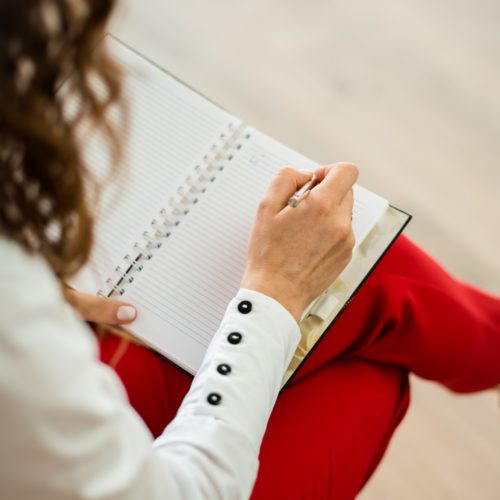We’re starting to experience some elements of the pre-COVID-19 world we once knew: restaurants are open, gyms are back, people who have been working from home are starting to return to their offices and many kids are getting back into classrooms. And while many may have dreamed of this day during the long days of lockdown, it can feel overwhelming now that there are more opportunities to socialize.
It’s completely normal to feel anxious as we navigate our way back to routine. That’s why we collected some helpful coping tips that you can use during this transition period and beyond. Use these strategies to take control of your emotions and remain grounded.
1. Use mindfulness check-ins
Neurocognitive research has shown that simply naming the emotion you are feeling could decrease the reactivity of the feelings. Get into the habit of doing a two-minute mindfulness check-in at the beginning, middle and end of the day to get off “auto-pilot” and feel more grounded. Set three alarms on your phone with the label “check-in” and write your responses (on paper or your phone) to these questions:
- What am I feeling? (Angry, sad, happy, content, excited, worried)
- What do I need? (Space, deep breathing, connection)
- Any other thoughts and reflections you want to note
Remember: there is no right answer for your check-ins. Instead of judging whatever emotion you are feeling, simply notice and label it. Replace “I should be feeling this way…” with “I am feeling _____ at the moment and that is okay.”
2. Sit with feelings of uncertainty
We crave certainty: we want to know that we definitely will not get sick, that we will be able to adapt going back to the office and more. The reality is that we don’t know what’s going to happen in the future. This uncertainty can leave people with worry, stress, heightened anxiety. The more you learn to sit with uncomfortable feelings that come from uncertainty, the more resilient you will be.

Ground yourself by coming back to the present moment. Ask yourself:
- What emotion am I feeling?
- Where do I feel it in my body?
- What is the worst-case scenario I’m fearing?
- What triggered this fear/worry?
Allow yourself to feel the discomfort of uncertainty. Engage in deep breathing exercises or journaling. More often than not, our anxiety and worries come from irrational thoughts such as “I’m never going to be able to socialize with friends again normally and will end up alone.”
After you have identified the anxiety and the core thought behind it, ask yourself:
- Is this thought based in any fact? (Did someone tell you that you are bad at socializing?)
- What is the realistic chance of the worst-case scenario happening? (Extremely slim.)
Come up with a more balanced view of the situation after you’ve assessed these factors. What would you tell a friend if they felt the same thoughts as you?
We have a tendency to assume that the worst-case scenario is inevitable. Notice when your brain starts to go down that spiral and ask yourself the question above. Know that no amount of thinking can change the future.
3. Notice when you’re using avoidance behaviours
Avoidance can be anything a person does to avoid facing intense thoughts or feelings. Here are some behaviours to watch out for:
- Avoiding situations (social gatherings, appointments)
- Repeatedly seeking reassurance (that you washed your hands correctly, that you’re wearing the right thing)
- Constantly engaging in distracting activities like social media, shopping, gaming and more
Here’s an example: cancelling plans with friends and blaming it on being too busy. Really, you could be feeling too anxious to see them, so you take on more responsibility at work or commit to another activity to have an easy “out.”
By continuing to avoid hard situations or feelings, you are teaching your brain that you made the right decision by avoiding the situation. This will only reinforce our anxious logic and will lead you to say no next time.
Tip: recognize when you avoid hard feelings. If you feel an intense emotion, try a healthy coping mechanism like journaling, talking to friends or practising a mindfulness activity to get to a place where you can make the right decision.
Be kind to yourself. Just like at the beginning of the pandemic, everyone is navigating this transition period for the first time. Find more coping resources from UHN here.


